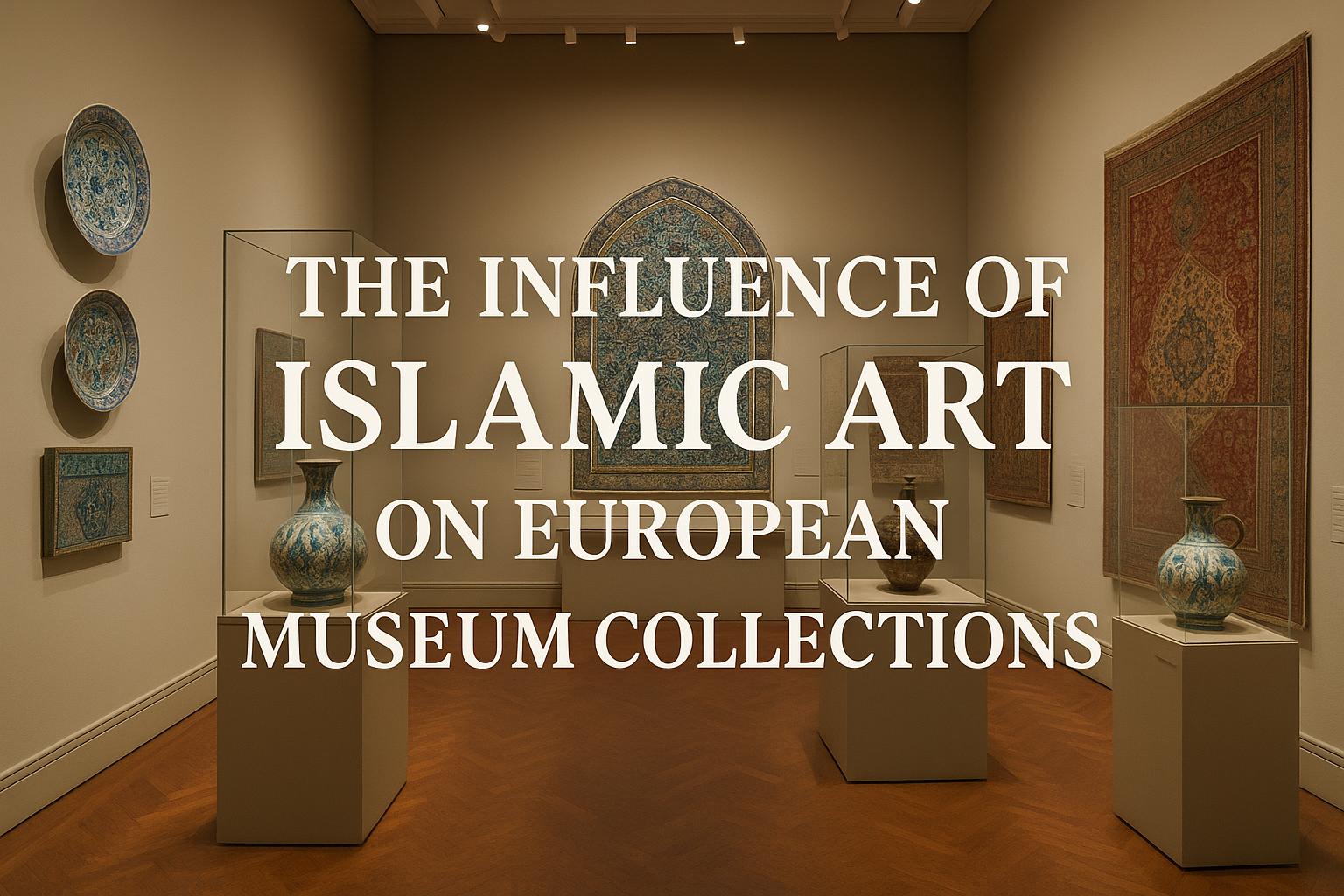The Emergence of Islamic Art in European Collections
The integration of Islamic art into European museum collections is an intriguing dynamic that sheds light on the historical interplay of diverse cultures. This subject is grounded in the substantial interactions between Europe and the Islamic world, dating back several centuries. This fascinating blend of artistic traditions serves as a testament to the complex, multifaceted history that connects these regions.
The Historical Context of European Interest in Islamic Art
The European fascination with Islamic art can be traced back to the medieval period. During this era, the Crusades played a significant role in fostering interactions between the European Christians and the Muslim world. These interactions laid the groundwork for cultural exchanges that would eventually lead to the incorporation of Islamic art into European consciousness. This nascent interest was further fueled during the later centuries as the trade routes expanded and the flow of knowledge increased across regions.
Impact of the Crusades and Trade
The Crusades opened paths not only for religious and military ambitions but also for cultural exchange. European crusaders, pilgrims, and travelers encountered the rich artistic traditions of the Islamic world. Intrigued by the region’s unique aesthetic sensibilities, they began to appreciate the art and craftsmanship. Similarly, trade routes that spanned across Europe, the Middle East, and North Africa served as conduits for both commerce and ideas. As traders moved across these regions, so did the exquisite artifacts and artistic expressions from Islamic cultures.
Early Collecting Practices
In the 17th and 18th centuries, European explorers, diplomats, and traders began to actively collect Islamic art. These activities were often driven by a sense of curiosity and the desire to own exotic items that reflected the artistic prowess of the Islamic world. During their travels, prominent figures acquired a plethora of artifacts, such as textiles, ceramics, and metalwork, characterized by their intricate and sophisticated designs.
European Aristocrats and Collectors
European aristocrats and collectors became particularly fascinated with these artifacts. The allure of Islamic art lay in its intricate patterns, vivid colors, and distinct aesthetic. The addition of such items to personal collections not only catered to a sense of adventure and discovery but also signified a status symbol among the elite. This trend laid a foundation for what would eventually transform into organized collections within public museums.
The Birth of Public Museums and the Institutionalization of Collections
The 19th century marked an era of transformation in the way art was collected and displayed, with the rise of public museums playing a pivotal role. These institutions began to actively acquire Islamic art as part of their broader mission to preserve and exhibit art from various cultures.
Institutional Milestones: The Victoria and Albert Museum and the Louvre
Iconic institutions like the Victoria and Albert Museum in London and the Louvre in Paris significantly contributed to the preservation and promotion of Islamic art. Their collections, enriched during colonial periods, provided a window into the rich tapestry of Islamic artistic traditions. The establishment of such collections underscored the educational and cultural value that these artifacts offered to a European audience eager to explore and understand foreign cultures.
The Role of Scholars and Curators
Integral to the process of integrating Islamic art into European collections were the efforts of scholars and curators. These individuals embarked on an academic journey to contextualize these artworks within their original historical and cultural settings. Their contributions extended beyond mere acquisition, as they sought to present Islamic art as a fundamental component of global art history rather than merely an exotic curiosity. Through diligent scholarship and exhibitions, curators have elevated the status of Islamic art, facilitating a deeper appreciation among European audiences.
Contemporary Collections and Exhibitions
In the contemporary period, the momentum around collecting and showcasing Islamic art has only intensified. Modern museums strive to broaden their collections and aim for comprehensive representations of Islamic artistic traditions.
Exhibitions at Leading Institutions
Today, institutions such as the Metropolitan Museum of Art in New York and the British Museum in London frequently organize exhibitions dedicated to Islamic art. These events offer invaluable platforms for cultural exchange, stimulating dialogue and understanding between different cultures. Exhibitions are meticulously curated to provide visitors not only with visual pleasure but also with an educational journey into the profound artistic legacy of the Islamic world.
Challenges in Integration and Representation
Despite the progress in integrating Islamic art into European collections, several challenges remain. The origins and provenance of some artworks provoke ethical questions, while cultural sensitivity remains paramount in how these pieces are displayed and interpreted. Additionally, achieving accurate and respectful historical context is an ongoing endeavor. While these challenges are significant, they also present an opportunity for cross-cultural dialogue and cooperation among global curators, scholars, and cultural institutions.
The Future of Islamic Art in Europe
The narrative of Islamic art within European museums is expected to continue evolving as globalization intensifies cultural exchanges across the world. An emergent realization underscores the importance of acknowledging and showcasing the diverse artistic heritages that populate our global landscape. European museums are poised to remain key players in this arena, serving as vital spaces for public education and the celebration of multicultural artistic achievements.
Conclusion
The story of Islamic art’s incorporation into European collections is one of historical depth, scholarly endeavor, and cultural curiosity. It reflects an ongoing journey rather than a concluded chapter, promising further exploration and understanding of the rich artistic traditions that define our diverse world. Through continued efforts to responsibly expand collections and engage audiences, European museums will contribute meaningfully to the appreciation and understanding of Islamic art, offering insights that bridge cultures and eras.

